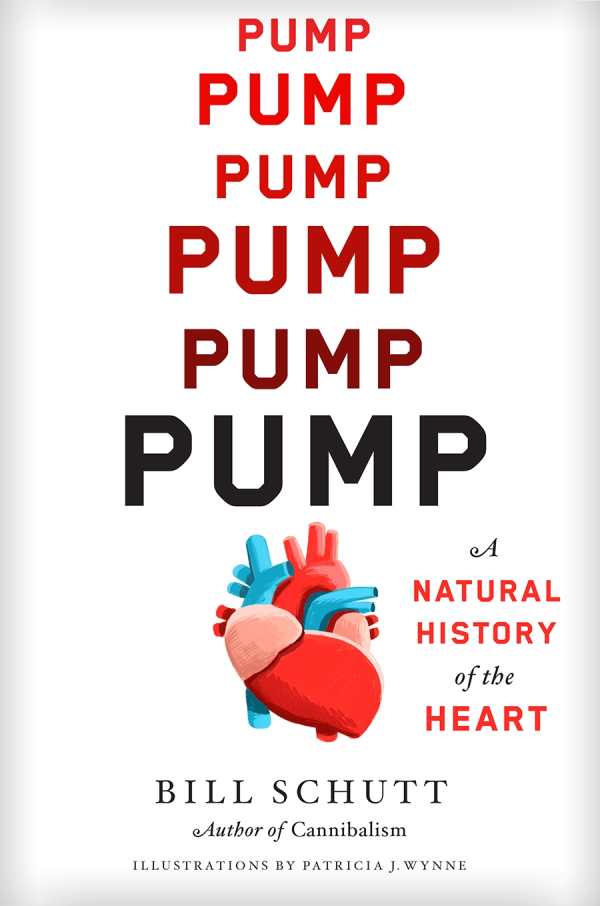
Pump
A Natural History of the Heart
Bill Schutt’s Pump is an entertaining survey of the evolution of the circulatory system. From grasshoppers to whales, it explains how hearts and other analogous structures work. Zeroing in on the human heart, the book contrasts the ancients’ understanding of its role with current efforts to treat its most pernicious ailments.
In 2018, Schutt visited a blue whale heart on display at the Royal Ontario Museum, alongside a Smart car for comparison. At the other end of the spectrum is the insect circulatory system, based around a dorsal blood vessel that conveys hemolymph. Earthworms, meanwhile, have multiple aortic arches instead of a single heart. All of these pumping mechanisms are “functionally equivalent,” having evolved to meet their species’ requirements.
In ancient Egypt, Schutt says, the human heart was viewed as the seat of the soul. And while successful transfusion was achieved as early as the seventeenth century, heart transplants are a more complicated matter and failed even into the 1980s, as in the famous case of Baby Fae, who died within weeks of receiving a baboon heart. And today, Harvard scientists are attempting to grow human hearts from stem cells, building on regeneration technology developed in zebrafish.
Schutt’s book recreates the interviews he conducted during research visits, while puns and other funny touches, like a section of direct addresses to flatworms, enliven its prose. Fascinating asides on the clotting ability of horseshoe crabs’ blue blood (harvested for pharmaceutical use) and Charles Darwin’s posthumous diagnosis—he was treated for angina, but in the 1950s it was proposed that he contracted Chagas disease from an insect bite—come in.
Illustrated by Schutt’s longtime American Museum of Natural History office mate, Patricia J. Wynne, this brisk and engaging history of hearts of all forms and sizes packs a punch.
Reviewed by
Rebecca Foster
Disclosure: This article is not an endorsement, but a review. The publisher of this book provided free copies of the book to have their book reviewed by a professional reviewer. No fee was paid by the publisher for this review. Foreword Reviews only recommends books that we love. Foreword Magazine, Inc. is disclosing this in accordance with the Federal Trade Commission’s 16 CFR, Part 255.
